The 5 Types of mountain bikes
Find out which mountain bike best suits you
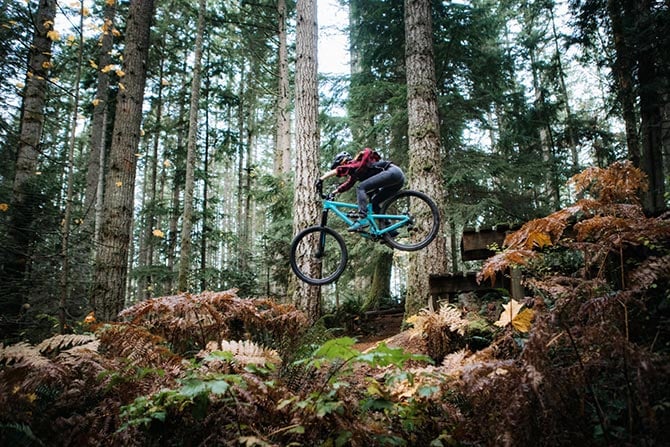
Riding leisurly through the mountains or riding a daring trail - there's a bike for every discipline. In this article, we'll explain the differences between mountain bikes, what Hardtail or Fully means and help you find which mountain bike best suits you.
- Hardtail or Fully – What's the difference?
- 5 different types of mountain bikes
- Cross country bike
- All mountain & enduro bike
- Downhill mountain bike
- Freeride mountain bike
- Fat bike
- Which one is right for me?
Hardtail or Fully - What's the difference?
The term Hardtail or Fully does not describe the bike's frame. Rather, it describes the bike's suspension system.
Fully = Full Suspension MTB
With the Fully, the front wheel and back portion of the bike have suspension. The Fully suspension helps compensate for shocks in uneven terrain, and a front suspension helps the front wheel maintain contact with the ground when going uphill. Suspension also helps protect your back.
Where a Fully shines:
- high speeds
- challenging and steep terrain
- Jumps and drops
Disadvantages of a fully :
- heavy
- expensive due to large components
- maintenance-intensive
Hardtail (back wheel has no suspension)
With Hardtail, just the front wheel has suspension. The rear wheel does not have suspension. A Hardtail is suitable if you:
- want to be fast and agile on the road
- bike mainly on forest roads and flat tracks
5 different types of mountain bikes
Not all mountain bikes are created equal. Each MTB discipline is different and therefore has different needs. While the differences are not always crystal clear, you can mainly distinguish the types based on their suspension systems.
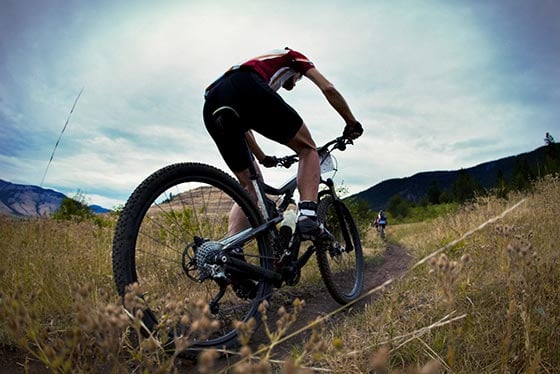
Cross Country Bike
The bike is mainly used in cross-country races. Races usually take place:
- through forests
- through fields
- on gravel paths
- on meadow paths
- through paths with smaller gradients and descents
The focus with cross county MTB is on maneuverability and a sporty riding position.
Frame: hard and carbon
Suspension: Hardtail
Amount of suspension give: 100 – 120 mm
All Mountain Bike & Enduro Bike
The All Mountain Bike describes a wide range of uses, namely in the mountains. It is suitable for
- easy and longer tours in the lowlands (at around 10 - 14 kg, it is considered light)
- ascents
- downhill descents on easy and medium-difficulty trails
- small jumps and drops
Suspension: Fully
Amount of suspension give: 120 – 160 mm
You can reduce or lock the give on the suspension system on many models. This makes it easier for you to ride uphill.
The Enduro Bike is a mix between the all mountain bike and the freeride mountain bike. It is designed for a wide range of uses:
- faster descents than the all mountain bike
- higher jumps than the all mountain bike
- easier to ride uphill than with the freeride mountain bike
Downhill bikes are very similar to the freeride bikes. That's why the amount of suspension give was increased, and the Enduro has wider tyres.
Amount of suspension give: 140 - 180 mm
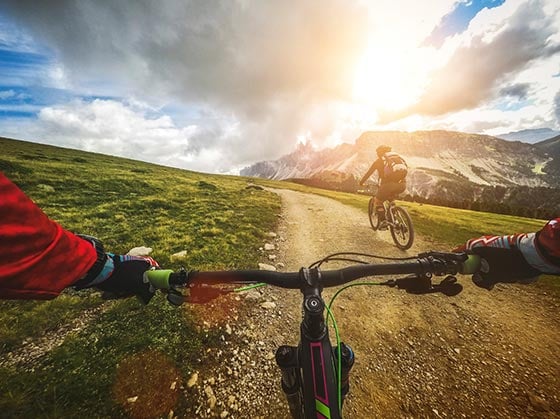
Downhill Mountain Bike
The downhill mountain bike is made
- to traverse challenging trails with steep gradients as fast as possible.
The shape of the downhill mountain bike is unmistakable: wide handle bars, thick tyres and a low saddle, for an optimal centre of gravity.
This type of mountain bike is quite heavy at 18 kg, because the frame must withstand the stress of big jumps. The tyres are thick and have good grip. Riding uphill is virtually impossible for a downhill mountain bike.
Amount of suspension give: 180 to 250 mm
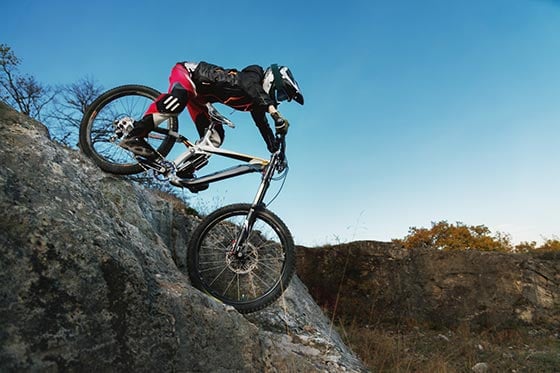
Freeride Mountain Bike
The bike is cross between a downhill and cross country mountain bike. They are made for
- very steep terrain
- technical obstacles and trails
- Long and high jumps and drops
While the freeride mountain bike is slightly lighter than its downhill counterpark, it's still no featherweight. Very stable components are used to ensure mountain bikes withstands extreme jumps (up to 20 meters). Therefore, mountain bikes are priced a bit higher.
Suspension: Fully
Amount of suspension give: 165 – 200 mm
Some Freeride mountain bikes are also suitable for uphill riding.
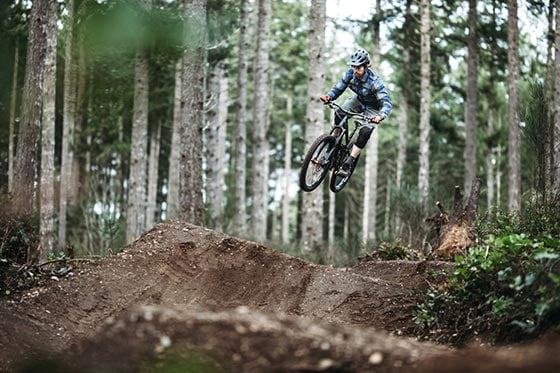
Fat Bikes
Fat bikes are made for tough surfaces, for example
- snow
- ice
- sand and
- surfaces with bad traction
You can recognise fat bikes by their wide tyres. At 4 to 4.8 inches, they are twice as wide as conventional mountain bike tyres.
A suspension system is often not included with fat bikes. The wide tyres are kept at below normal levels to absorb most of the shock.
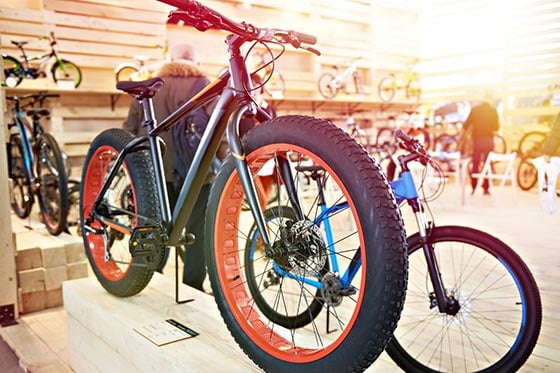
What is the right mountain bike for me?
Deciding which mountain bike is the right one depends where you want to go and how much adrenaline you need.
Alpine Crossing & Tours
For a long tour in the mountains, you'll need a mountain bike that can cope with any terrain and slope, and the bike shouldn't weigh too much, thereby slowing you down. Perfectly suited for the task is the
- All Mountain Bike
- Enduro
If you want a bit more fun while trail riding, we recommend the
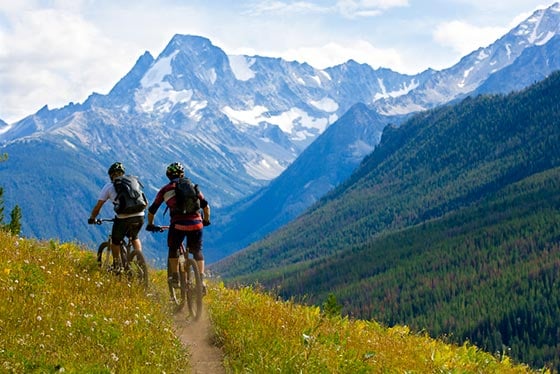
Fun in the snow and sand
Before writing off sand and snow. We recommend dawning on thicker tyres. For this, we recommend a
- Fat Bike
You can read up on „Biking in Winter“ and gain some tips and tricks along the way.
Going up the mountain and then down on exciting trails
If you're planning to ascend mountains at a leisurely pace and reward yourself with an exciting downhill run, then you should opt for
- Enduro
Adrenalin on steep and demanding trails
You'd rather do without riding uphill. You spend your time in bike parks or on trails that you can reach with the lift. Downhill, you're looking for the ultimate adrenaline kick.
- If it's all about the thrill of speed, go with the Downhill Mountain Bike.
- For extreme gradients and technicall trails, the Freeride Mountain Bike is the right call.
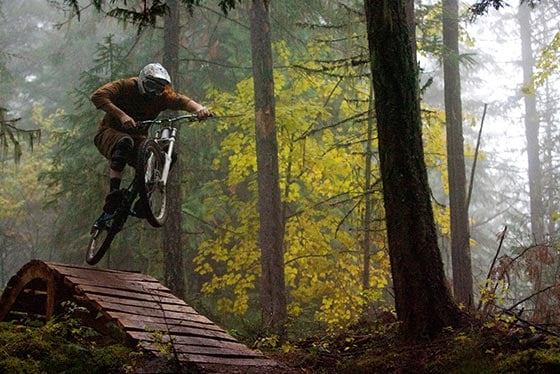
A decision has been made. What now?
You know which mountain bike is the right one for you, but don't know how or where to begin?
We recommend starting with a mountain bike course, as the risk of injury on trails due to inexperience is high. In the courses, you will not only learn effective riding techniques, but also how to change the inner tube or adjust your bike correctly. You can often find courses in local sports stores, clubs or with mountain bike manufacturers.
To make mountain biking fun, the right clothes are essential. In our Online Shop, you'll find long and short sleeved jerseys for mountain biking. In our 3D Designer you can even design your jersey yourself as you see fit.
Image Credits: Title Image: RyanJLane/iStock, Image 1: GibsonPictures/iStock, Image 2: GibsonPictures/iStock, Image 3: yanik88/iStock, Image 4: RyanJLane/iStock, Image 5: sergeyryzhov/iStock, Bild 6: piola666/iStock, Image 7: GibsonPictures/iStock